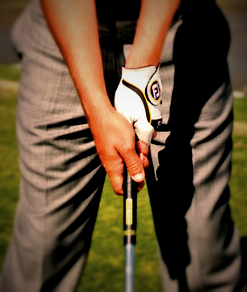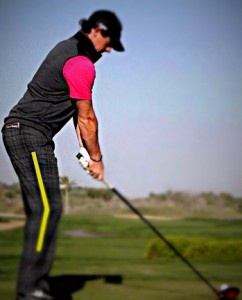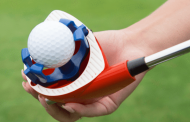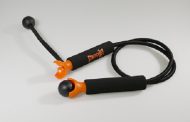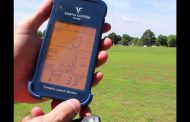The most common mistakes we see among most golfers are generally also the easiest things to control. How to grip the club, How to stand to the ball, and where to position the ball in your stance are all relatively easy fundamentals for most golfers to achieve, yet most golfers ignore them and focus on more dynamic aspects of the swing. However the thing that most people fail to realise is that the fundamentals such as grip, posture and ball position actually have a huge influence on every other aspect of the swing.
Grip
You will find that many tour pro’s will have slightly different varieties of grip style. Some will overlap, some will interlock, and you will often find some very strong grips (i.e. hands are rotated to the right) and sometimes even weak (rotated to the left). However there are certain things that will most certainly help you when it comes to gripping the club
- Make sure the grip runs more through your fingers rather than the palm of your hand
- Keep grip pressure relatively light, approximately 6 out of 10 should provide enough grip to hold the club and produce power, without manipulating or restricting the club too much.
- I would generally air on the side of a slightly strong grip over a slightly weak grip for the average golfer. A slightly strong grip will mean the hands are turned slightly to the right at address, meaning you will be able to see the logo on the glove hand Similar to the picture below.
Posture
Posture is possibly the number one most under estimated fundamental in golf. We see so many golfers with bad posture and balance as they address the golf ball. Possibly the biggest mistake we see is golfers not using their hips to bend forward. Instead we will often see people bending from their upper back with little or no movement from their hips. This can cause both poor swing mechanics and lower back pain, however avoiding this can be a relatively simple task:
- When getting into posture try and adjust your weight between your heels and toes. We generally want the most pressure to be on the balls of your feet at address to provide stability and balance in the swing.
- Bend forward from your hips, feeling like you push your belt back away from the golf ball. If you feel tension in the back of your legs it is a good sign you are doing it correctly.
- Don’t “bend” the knees too much, just feel like you “soften” them a little. When amatuers try to bend their knees a lot they will often achieve a more seated position, and a more upright spine angle. Ideally softening the knees slightly while maintaining your spine angle will create a solid and athletic posture.
Ball Position
Ball position is possibly the easiest of these 3 fundamentals to get right as it is the least subjective. To simplify how you look at where the ball should be positioned in your stance there are 3 clubs you can use as a reference
- When using a pitching wedge, position the golf ball in the middle of your stance. Make sure to use your heels as a reference, as if you flare or angle one toe it can be quite misleading.
- A driver will be positioned on the other end of the spectrum, just inside your left heel. This will allow you to strike up on the golf ball and maximise the distance you can get from the tee.
- The 6 iron will then be positioned in the middle of the driver and the Pitching wedge.
Use an alignment stick or club on the ground to check your ball position. Fitting each club into these areas of you stance will increase your chances of making good contact with the golf ball.
Working on these fundamentals will provide you with a consistent and repeatable set up for you to begin your swing from. These fundamentals are key elements to achieving a successful swing as each fundamental will affect other parts of the swing later on. Improve these fundamentals and your scores will improve too.


